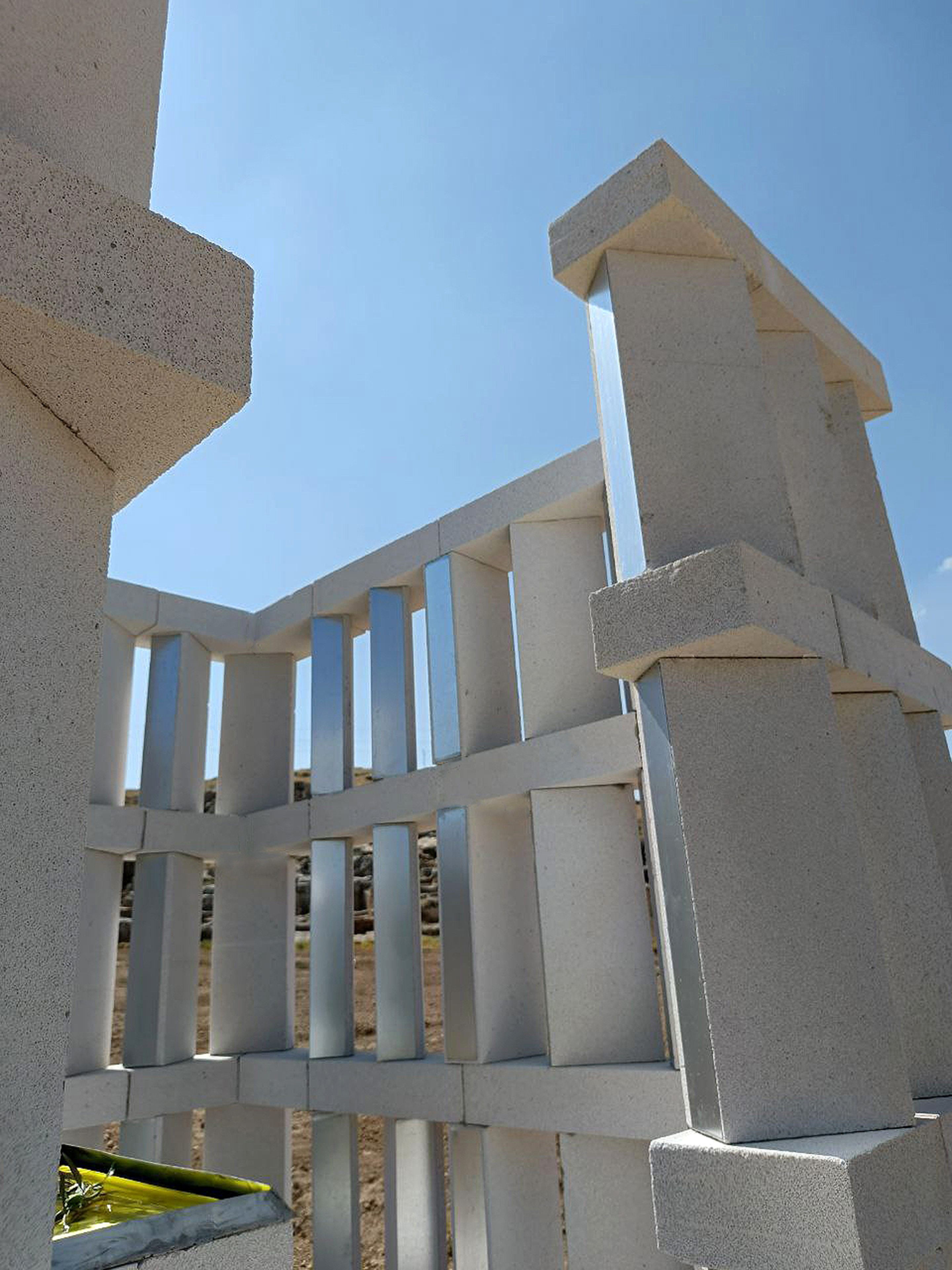- 7 Kasım 2024
- 1803 defa okundu.
Monument of Being Installation
Türkan Sultan Yaşar ve Danial Ismail tarafından tasarlanan Monument of Being Installation, Perre Antik Kenti ve Nekropolü’nde yer alıyor. Bu alana özel yerleştirme çalışması, yaşam ve ölüm arasındaki karşılıklı etkileşimi irdeliyor.
This site-specific installation at Perre Antique City and Necropolis explores the interplay between life and death within a historically sacred space also known for its olive oil production. Carved into the hill, the architectural landscape of Perre serves as a foundation for a dialogue between the tangible and intangible values of the site. The installation celebrates the sacredness and healing abilities of the olive, revered in divine religions, by honouring its significance through a monumental form. Drawing on classical architecture and the antique city’s spatial language, the work offers a fresh perspective on Perre’s rich history, merging ancient traditions with contemporary interpretation.
This project is part of Rising: 2nd Kommagene Biennale. The Monument of Being draws inspiration from an intersection of history, context, and materiality. This site-specific installation at Perre Antique City (Necropolis) in Adıyaman weaves together the city’s ancient past, the impact of recent earthquakes, and visual cues from photographer Joseph Koudelka\’s Shooting Holy Land series. The aim is to create a contemplative connection between the site’s sacred heritage and contemporary artistic interpretation.
The installation explores the duality of life and death within Perre, a historically significant location known for its ancient olive oil production. Carved into the landscape, Perre’s architectural form provides the foundation for a dialogue between the tangible and intangible, where sacred values tied to the olive tree—revered in religious texts—are celebrated through the monument. Perre used to be one of the biggest cities Commagene Kingdom (163 BC – 72 AD) and later ruled by Romans, called as Hierapolis (Holy City). Inspired by classical architecture and the antique city’s spatial language, the work bridges ancient traditions with modern design sensibilities, offering a fresh perspective on Perre’s rich cultural narrative.
Although monumental in appearance, the installation maintains a small physical footprint. The final design uses one-third of the material originally proposed, made possible by the inclusion of a porous wall design, commonly employed in tropical climates. This wall system performs effectively in Adıyaman’s hot, windy environment, diffusing strong winds and enhancing the monument’s presence. The carefully arranged blocks frame views of the surrounding landscape, offering intimate, narrow windows that foster a sense of privacy within the structure.
The monument, measuring 68sqft, contains a singular interior space with a central island and two entrances aligned along the north-south axis, grounding it within its site. The island serves as a pedestal for a galvanized metal tray, which holds cold-pressed olive oil and an olive branch, symbolically tying the work to the region’s agricultural heritage. Visitors engage with the installation through sensory experiences, encountering the space, form, and site.
The interior walls are lined with galvanized metal strips, designed to reflect the shifting hues of the sky, oil, and ground, creating a dynamic gradient that evolves throughout the day. The primary material—15 cm thick aerated concrete blocks—are stacked and bonded with wet adhesive, ensuring structural stability while allowing for the monument’s temporary nature. Designed to last two years, the installation is both robust and low-maintenance, honouring the legacy of the site while offering a moment of reflection within its contemporary form.






















